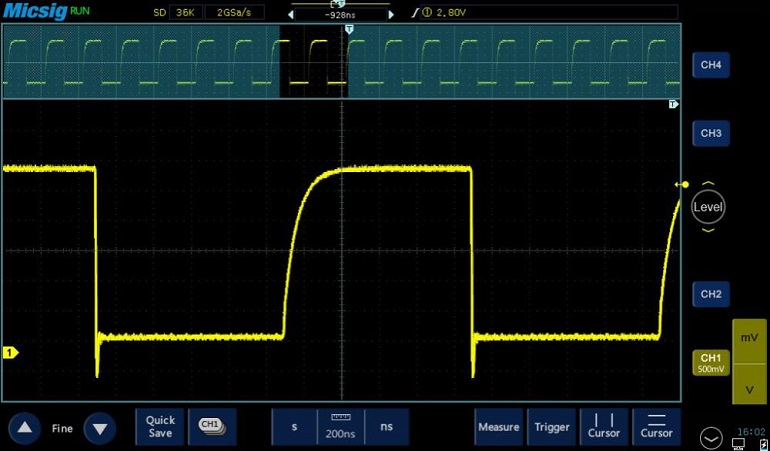Digital oscilloscopes, often referred to as digital storage oscilloscope (DSO) or digital sampling oscilloscopes (DSO), are complex electronic devices composed of different software and electronic hardware that work together to detect, process, display, and store specific data that represents a signal of interest. The simplest model of a digital oscilloscope features six basic elements: a power supply, analog vertical input amplifiers, analog to digital converter with a digital waveform memory, a time base that features a triggering and a clock drive, circuits for waveform reconstruction and display, and of course, an LED or LCD display.

The way it works is by periodically sampling a time varying analog signal and storing the vakues in correlation with time in the waveform memory. The digital oscilloscope chops up input signals into separate time points using the internal clock. The oscilloscope quantizes the instantaneous amplitude values at those points and the digital memory stores the resulting digital representations. The display is regenerated from the memory at a predetermined clock rate and is consequently viewed as a series of dots.
There are many reasons why you should buy digital oscilloscopes instead of analogue ones. Fist of all, analogue oscilloscopes are an outdated technology and have a limited performance. In fact, very few manufacturers still produce them. People buy digital oscilloscopes due to their ability to store digital data which can later be viewed, uploaded to a computer, their ability to generate a hard copy on a disc, and the capacity to instantly make measurements on the digital data.
Digital oscilloscopes can be made to display the waveforms after a triger event, while analogue oscilloscopes need to be triggered first before they start a trace. A digital oscilloscope is also able to examine digital information that is stored in its memory and automatically measure parameters that are selected by the user, such as voltage or frequency. The captured data can be displayed in various ways since there is actually more captured data than what is shown on the display. A digital oscilloscope provides different storage options, as well as different display and processing options.
A digital oscilloscope is the perfect solution for displaying complex signal waveform that require measurements and calculations on specific portions of the waveforms to be made in order to reflect the chosen parameters of the waveforms.
There are two basic categories of digital oscilloscopes: the single shot oscilloscope and random interleave oscilloscope. The single shot oscilloscope does real time sampling as soon as the trigger condition has been satisfied and it has limited time to sample a single event. The random interleave oscilloscope on the other hand, samples repetitive events over certain periods of time at different points.

